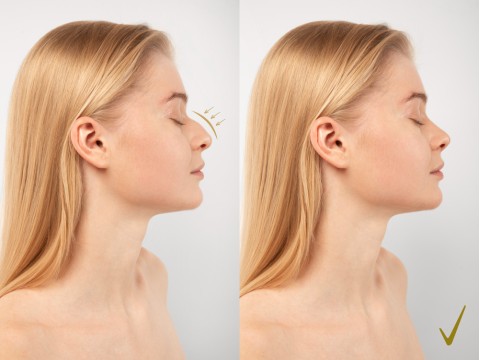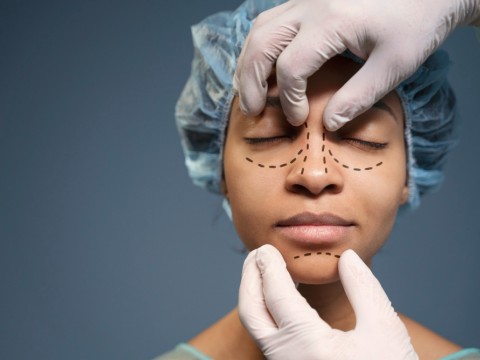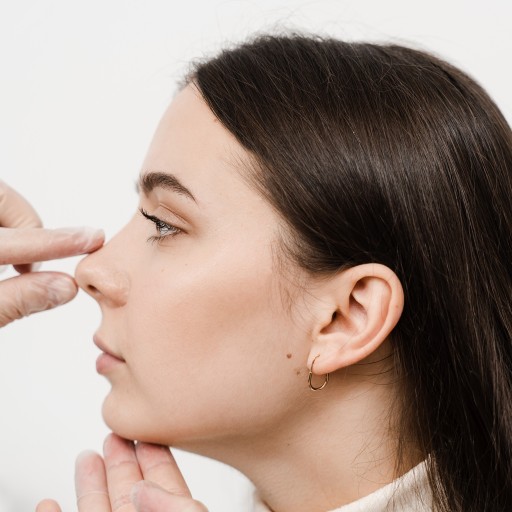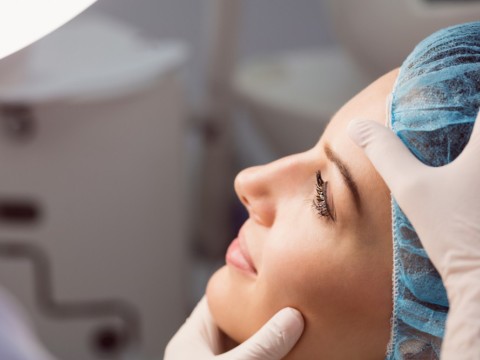Quote of Alara Health Group
Rhinoplasty
Rhinoplasty, more popularly referred to as nose surgery, and nasal aesthetics are both designed to enhance appearance and functionality of the nose. Whether it be aesthetic improvement or functional correction, rhinoplasty is a solution for those people who want to change the shape, size, or function of their noses. New developments in the field of surgical techniques have made it a safer, more common operation, and can be tailored to suit the needs of each patient. The paper will try to summarize into fundamental elements what rhinoplasty is, the risks and benefits associated with it, and pre- and post-operative stages.
What is Rhinoplasty?
Rhinoplasty is a surgical procedure meant to change the shape of a person's nose, for either cosmetic or functional reasons. This can be achieved through changing the bone, cartilage, or both bones and cartilages to derive a preferred result. Rhinoplasty may be done to reduce the size of one's nose, reshape the nasal tip, or correct other structural abnormalities that impede breathing. It is a very individualistic operation since it needs to be tailored according to the face and objectives of the individual to finally result in a harmonious and balanced feature.
How Is Rhinoplasty Done?
Rhinosplasty is carried out under general anesthesia in most cases, and the surgery can be either open or closed. In an open rhinoplasty, there is a transverse incision across the columella, which provides much better accessibility and view. In a closed rhinoplasty, there are incisions made inside the nostrils with no eventual external scarring. The surgery reshapes the bone and cartilage of the nose to an aesthetically pleasing or functional effect desired. This usually takes one to three hours based on the complexity of the surgery.
Advantages of Rhinoplasty
Rhinoplasty has a number of aesthetic and functional advantages. A successful rhinoplasty has the ability to create facial harmony by offering nose proportions, which balance other facial features. If there is a problem in breathing, surgeries can also be done inside the nose to correct structural defects, such as a deviated septum that may impede proper airflow and breathing. Rhinoplasty enhances self-confidence and improves quality of life due to displeasure with the nose. These benefits mean the popularity and effectiveness of the procedure in order to meet the needs of the patients.
Risks and Considerations
Like all other surgical practices, there are risks and considerations associated with rhinoplasty. Consequently, this may include infection, bleeding, and reactions against anesthesia. There is a kind of risk associated with asymmetry, breathing difficulties, or unsatisfactory aesthetic results. Making a selection of a competent and experienced rhinoplasty surgeon will serve to minimize such risks. Proper pre-operative consultation and cautious adherence to post-surgery recommendations allow one to minimize the risk of complications and ensure a successful outcome.
Recovery after Rhinoplasty
Recovery in rhinoplasty is gradual. Immediately following surgery, there may be swelling, bruising, and discomfort; these conditions generally disappear over the first weeks. A splint or packing is often placed inside the nose for support of the new shape to support the healing process. Most patients can return to work and normal activities within one to two weeks, but strenuous activities are to be avoided for several weeks. The final result of the surgery takes a few months to actually turn up completely because the dissolving of swelling is continuous and the nose eventually ends up taking its new shape.
Before and After Rhinoplasty
Rhinoplasty requires extensive consultation and pre-operative discussion with a surgeon in order to make realistic expectations and planning of the operation. Before that, pre-operative photos can be taken for an estimate of the surgery result, and then they can be used to guide the simulation of the surgical approach. Post-surgery, it is very important to follow instructions given by your surgeon on how to take care of and recover from the procedure. Before-and-after photographs may serve to depict better how a transformation took place and to appreciate successful results. It is important to note that although rhinoplasty can greatly improve aesthetics and function in many instances, the best possible results do require a little patience and adherence to some guidelines in post-operative care.
Rhinoplasty is a versatile and effective procedure for improving both the appearance and function of the nose. Knowledge about what the surgery would entail, including costs, benefits, risks, and recovery, will go a long way in helping you make an informed decision as to whether or not this is the right option for you. You will also achieve the desired outcomes and advantages of a well-balanced and functional nose by selecting the best and most experienced surgeon and following all the instructions pre- and post-operative. Rhinoplasty is, therefore, a very good opportunity to enhance facial aesthetic features and improve the quality of life.
- Abdominal liposuction
- Arm Lift (Brachioplasty)
- Back Liposuction
- Blepharoplasty (Eyelid Surgery)
- Brazilian Butt Lift (BBL)
- Breast Augmentation
- Breast Augmentation with Tear Drop Implants
- Breast Correction
- Breast Lift
- Breast Reconstruction
- Breast Reduction
- Brow Lift
- Buccal Fat Extraction
- Butt Implants
- Buttock lift
- Buttock Reduction
- Cheekbone Reduction
- Chin Implant
- Chin Liposuction
- Combined Aesthetics
- Health Insurance
-
Accommodation
- Online Healthy Life Assistant 9/5
- Post - Experience Follow Up 6 Month
-
Extra Privileges

- Health Insurance
-
Accommodation
- Online Healthy Life Assistant 24/7
- Post - Experience Follow Up 1 Year
- Pre-Treatment Doctor Consultation
-
Extra Privileges

 Private
Private
- Health Insurance
- Healthy Life Butler
- Post - Experience Follow Up 2 Year
- World-Famous Doctor Consultation
-
Extra Privileges
* Price varies depending on extra and upgrade selections.
Plastic surgeries for nose are applied to everyone if they don’t have different health condition that hinder the surgery. For example, If you have a bleeding disorder, such as hemophilia, you may not be a candidate for rhinoplasty. The recommended minimum age for the procedure is typically 18 years old. This age is advised because, by 18, the nasal bone has usually fully grown, providing a more stable foundation for the surgery. However, in exceptional cases where there is a breathing impairment or other significant issues, the surgery may be considered at a younger age. The decision in such cases is typically based on the individual's specific medical needs and circumstances.
After undergoing rhinoplasty surgery, especially in the first 24 hours, you might experience some puffiness in your face, nose discomfort, and a mild headache. These are normal side effects and can be managed with pain medication. Both internal and external dressings are removed within 5-7 days. Avoid using eyeglasses or sunglasses on your nose for at least four weeks to prevent pressure. Most individuals can return to work within a week to ten days. Steer clear of strenuous exercise and contact sports for six weeks to safeguard your nose from potential injury. The new shape of your nose becomes more evident in the second week as the swelling, edema, and dark circles begin to diminish. The true transformation becomes apparent around the third month.
Rhinoplasty is generally not a painful surgery. Most people can resume their normal activities a week after the procedure. After the rhinoplasty you may experience mild pain which can be managed with painkillers.
The use of tampons in nasal surgeries is a common concern for many people. Nowadays, classic tampons are rarely used in plastic surgeries. Instead, silicon tampons are typically employed. Silicon tampons serve as a barrier between the inner and outer walls of the nose, preventing the formation of adhesions. Unlike traditional tampons, silicon tampons are soft and flexible, making their removal from the nose easy and painless.
Nose job is a surgical operation and the results are permanent.
One such option is a temporary nonsurgical nose job, often referred to as liquid rhinoplasty. Liquid rhinoplasty is a temporary solution addressing concerns like a dorsal hump, a drooping nasal tip, or asymmetry. This procedure should be performed by a skilled plastic or facial plastic surgeon. Typically, liquid rhinoplasty utilizes hyaluronic acid-based injectable fillers, the same type commonly used for cheek and lip enhancements. The procedure is quick, taking approximately 20 minutes, and the effects last between 6 to 18 months.
Although you will experience a loss of smell right after your rhinoplasty, it is important to remember that this loss is only temporary. Any smell loss is usually temporary and resolves within a few weeks.
Yes, rhinoplasty can address functional issues in addition to cosmetic concerns. Procedures such as septoplasty or turbinate reduction can be incorporated to improve nasal airflow and alleviate breathing difficulties.
In most cases, rhinoplasty is performed using incisions inside the nose (closed rhinoplasty) or with a small external incision on the columella (open rhinoplasty). Scarring is minimal and often not visible, especially with closed rhinoplasty.





